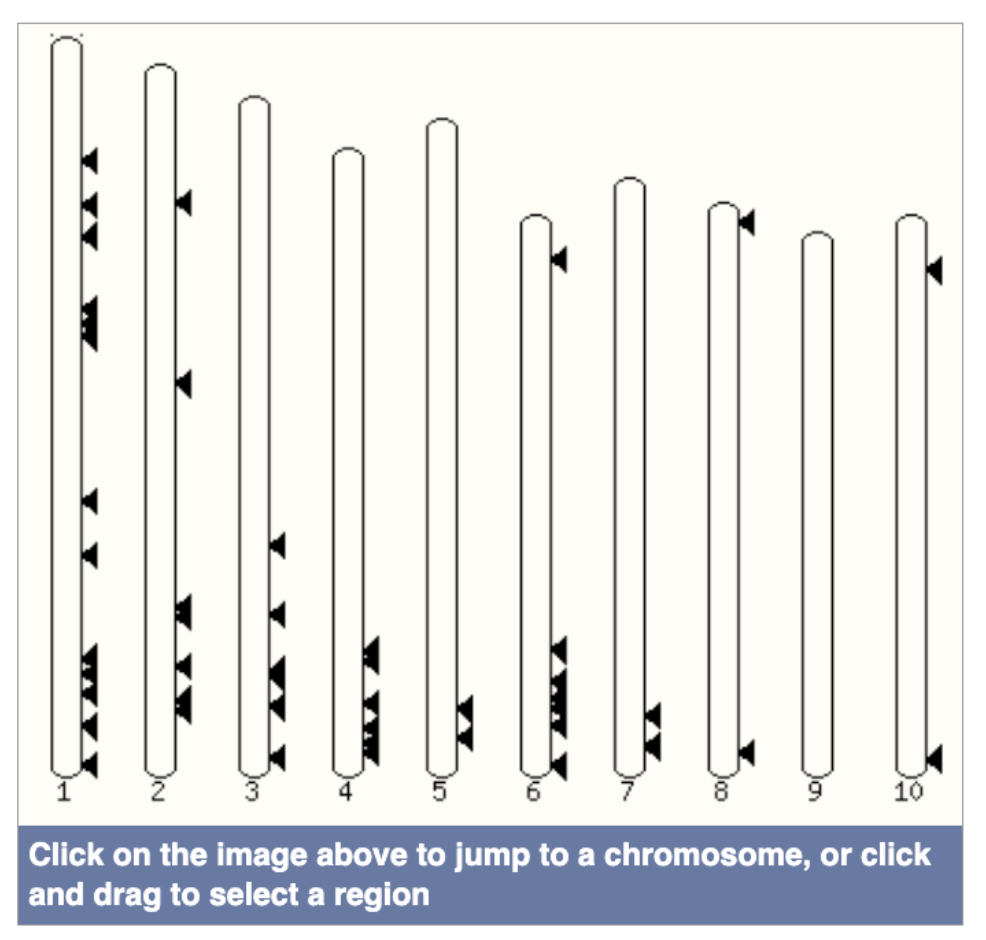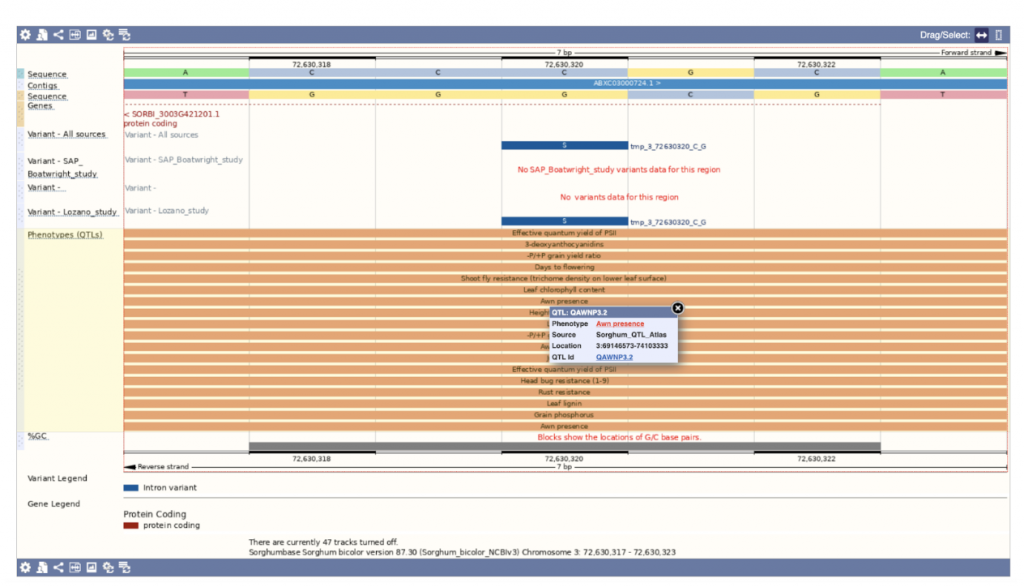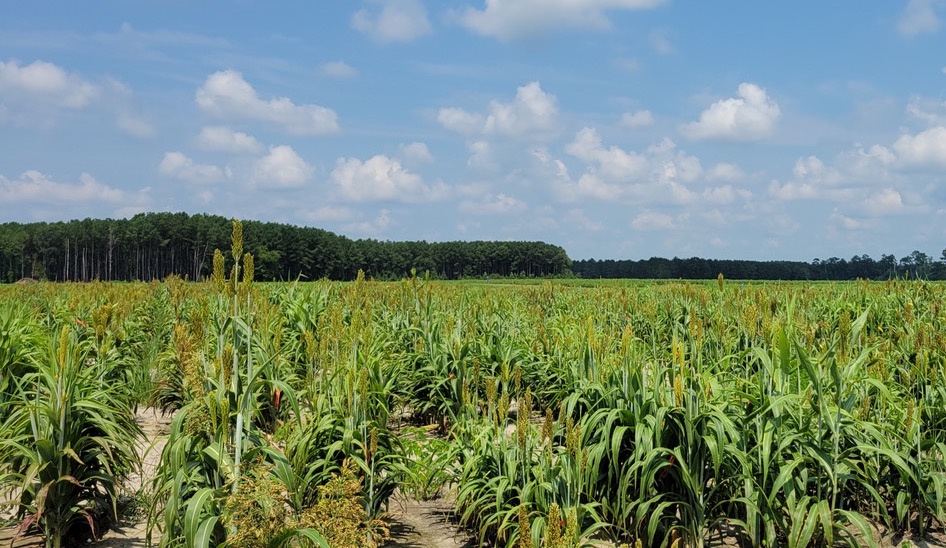In the last twenty years, there has been a significant increase in the use of diversity panels for genetic dissection and crop breeding. Constructing effective genetic mapping populations is of pivotal importance. Since most genetic mapping populations are based on biparental crosses and these crosses have relatively low genetic diversity, there is a high probability that the parents will carry the identical alleles at a given locus. A diversity panel based on multi-parent advanced generation inter-cross (MAGIC) can offer higher resolution and power for mapping Quantitative Trait Loci (QTL) since alleles are polymorphic across multiple parents. Although much research has been devoted to increasing understanding of the underlying genetics behind traits in sorghum, there are still many traits for which the genetic basis has yet to be pinpointed.
In an effort to support higher resolution trait mapping, scientists from Clemson University, Cornell University and Carolina Seed Systems developed the first non-random mated (structured) MAGIC population in grain sorghum. The MAGIC B-Line (MBL) population was developed by selecting four genetically distinct founder lines of grain sorghum [Sorghum bicolor (L.) Moench] each from a different race – kafir (SC630), guinea (SC605), durra (BTx642) and caudatum (BTxARG-1). These lines have distinct qualitative features, including panicle architecture, plant color, seed color, endosperm texture and awns. The researchers genotyped a set of MBL (708 F6) recombinant inbred lines (RILs,) along with their founders, using Diversity Arrays Technology (DArTseq) and constructed a genetic linkage map using a subset of polymorphic, quality-filtered markers (2,728 SNPs) for QTL interval-mapping. To validate the resource, three traits (seed color, plant color and awns) were mapped to four regions, which overlap with genetic locations known to code for these traits. This MAGIC panel was designed so MBL lines could serve as female/seed parents in the cytoplasmic male sterility breeding system.
The MBL population will be a unique genetic resource to discover novel genes/QTL associated with breeder-relevant traits, and it can facilitate marker-assisted selection to enrich the seed parent gene pool. Founders of the MBL population were deliberately chosen for their ability to maintain the sterility to A1 cytoplasm while capturing genetic diversity across primary botanical races. The best-performing progeny of the MBL could serve as female seed parents for hybrid seed production. – Neeraj Kumar
SorghumBase examples:




Reference:
Kumar N, Boatwright JL, Brenton ZW, Sapkota S, Ballén-Taborda C, Myers MT, Cox WA, Jordan KE, Kresovich S, Boyles RE. Development and Characterization of a Sorghum Multi-Parent Advanced Generation Intercross (MAGIC) Population for Capturing Diversity among Seed Parent Gene Pool. G3 (Bethesda). 2023 Feb 9:jkad037. PMID: 36755443. DOI: 10.1093/g3journal/jkad037. Read more
Related Project Websites:
- Richard Boyles at Clemson University: https://www.clemson.edu/cafls/faculty_staff/profiles/rboyles
- Neeraj Kumar at Clemson University: https://www.clemson.edu/cafls/faculty_staff/profiles/nkumar2
- Lucas Boatwright at Clemson University: https://www.clemson.edu/cafls/faculty_staff/profiles/jboatw2
